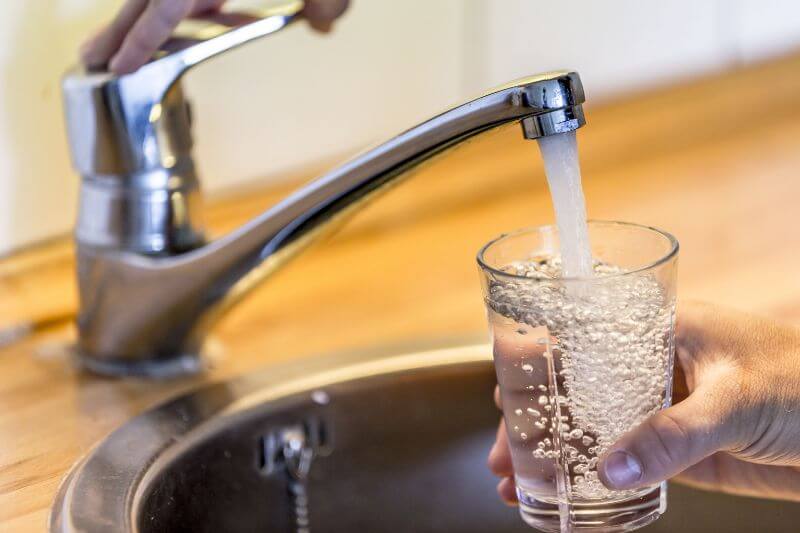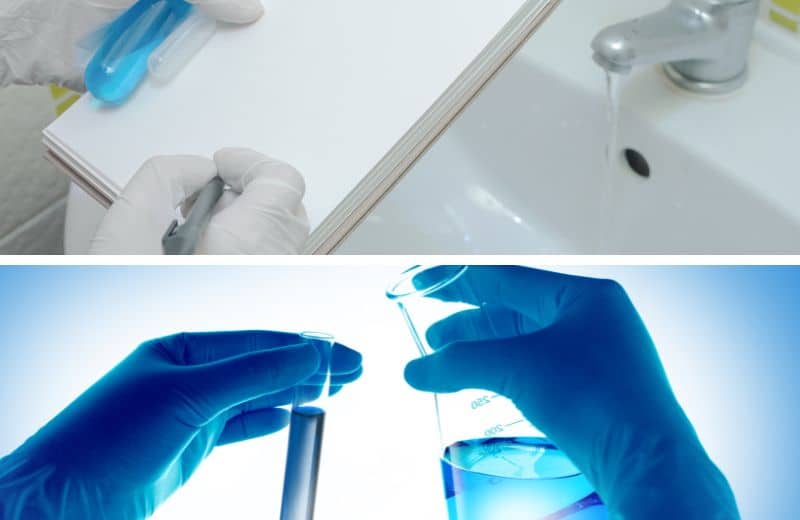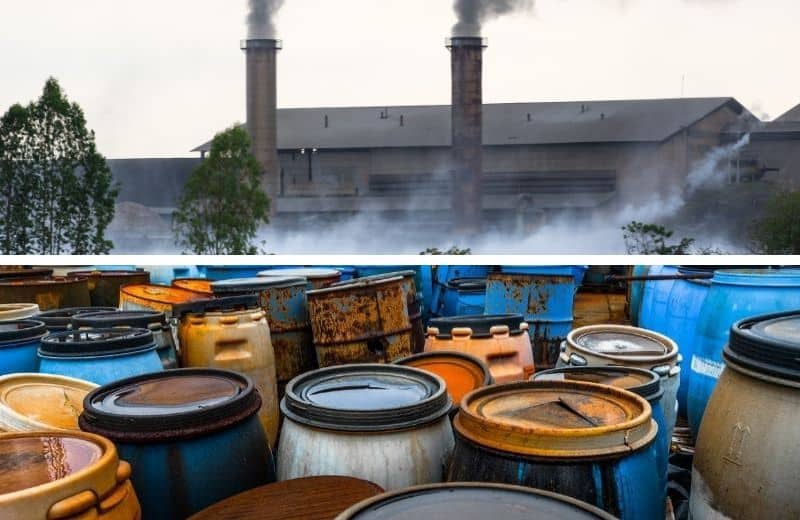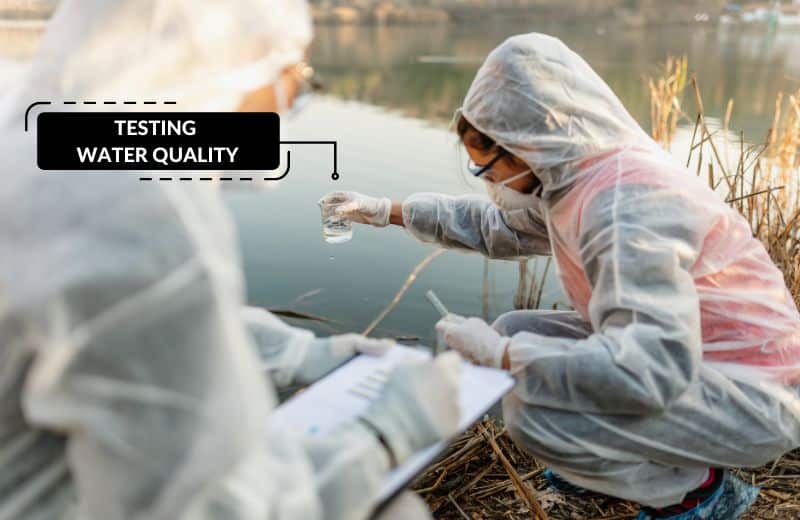Is it safe to drink tap water in Tampa, Florida? How clean is Tampa water? Does Tampa have good water quality, and are there any contaminants in the City’s water supply that exceed EPA maximum allowances?
Read on to find out.
📌 Key Takeaways:
- The drinking water in Tampa, Florida is considered generally safe to drink.
- There were 18 contaminants detected in the City of Tampa water, but none of these exceed local, state, or federal regulations.
- The 4 biggest problem contaminants in Tampa drinking water are arsenic, hexavalent chromium, radium, and disinfection byproducts.
Table of Contents
- 🚰 Can You Drink Tampa Tap Water?
- 🗺️ Where Does the Tap Water in Tampa Come From?
- 📉 Who Regulates Tampa Drinking Water?
- 🧪 Tampa Annual Water Quality Report
- ☣️ Contaminants Found Above Guidelines in Tap Water in Tampa
- 🧫 Main Contaminants Found in Tampa Tap Water
- ⛲ Tampa Drinking Water in Public Places
- 💬 Frequently Asked Questions
🚰 Can You Drink Tampa Tap Water?
Yes, you can drink Tampa tap water because the City’s water utility (the City of Tampa Water Department) treats and disinfects the water to make it safe for drinking according to state and federal regulations.
Water utilities are required to reduce their contaminant concentrations to below Maximum Contaminant Levels (MCLs) set by the Environmental Protection Agency (EPA). Tampa’s water contains trace contaminants below the EPA MCLs, so it’s technically safe to drink from a legal standpoint.
Additionally, the most recent EPA ECHO database for City of Tampa Water Department listed 0 drinking water violations between April 30, 2019 and June 30, 2022, which is reassuring news for residents.
However, there are several organizations that question whether “legally safe” is the same thing as “actually safe”, since EPA regulations are, according to these organizations, fairly lenient.
The Environmental Working Group (EWG) is one organization with this opinion, so much so that the EWG has produced its own Health Guidelines that are much lower than the EPA’s MCLs for regulated contaminants.
These Health Guidelines are simply that – guidelines – so they’re not legally enforceable. However, they’re worth looking into if you agree that certain contaminants are too dangerous at the EPA’s maximum allowances.
According to the EWG Tap Water Database for the City of Tampa Water Department, 18 total contaminants were detected in Tampa’s water, 6 of which exceed EWG Health Guidelines. We’ve looked at these contaminants in detail later in this guide.
What else should we know about the safety of Tampa Bay water?
There are no lead pipes in the City of Tampa Water Department distribution system, and the water utility also employs a corrosion control program to prevent lead leaching from plumbing materials. This is great news since lead is one of the most dangerous drinking water contaminants (the EPA MCL for lead is 0).

However, if you have an old home built before 1970, your pipes, fixtures, and plumbing may be laced with lead. Because your home is privately owned by you, it’s your responsibility to replace your plumbing or install a water filter if you discover lead in a water test.
🗺️ Where Does the Tap Water in Tampa Come From?
The tap water in Tampa comes primarily from the Hillsborough River, an offshoot of the undeveloped natural system called the Green Swamp.
To augment its river water source, Tampa Water Department stores more than 1 billion gallons of treated water in underground aquifers. In extreme periods of drought, Tampa buys treated surface water and groundwater (sourced from the Floridan aquifer) from Tampa Bay Water. This isn’t always necessary (for instance, in 2021, no water purchases were made).
Surface water sources like the Hillsborough River are exposed to the elements, so they’re more likely to be affected by air pollution and runoff compared to groundwater (underground) sources.
Once pumped from the source, water is treated at Tampa’s main surface water treatment plant, the David L. Tippin Water Treatment Facility, which provides just over 80 million gallons of water per day.
The water treatment plant uses a process that involves screening, coagulation and flocculation, biofiltration, disinfection using chloramine (chlorine and ammonia) and chlorine, fluoridation, and treatment to prevent corrosion of pipes in the water system.
The City’s treated water is delivered to a 220-square-mile area with more than 2,160 miles of water mains to meet public demand.

📉 Who Regulates Tampa Drinking Water?
Tampa drinking water is managed by the City of Tampa Water Department and regulated by the Environmental Protection Agency and the Florida Department of Environmental Protection (DEP).
The EPA has established maximum allowances for numerous contaminants with known health concerns in its National Primary Drinking Water Regulations, produced under the Safe Drinking Water Act.
All public water systems in the country, including Tampa Water Department, must adhere to the EPA’s regulations by treating their water to reduce contaminants to concentrations below these MCLs.
Tampa’s water utility ensures compliance with EPA guidelines by testing water for over 200 contaminants before it leaves the water treatment plant. This testing confirms that suitable treatment has been carried out to ensure safe, high-quality drinking water in the City.
Additionally, the river water used to supply the City and the wider Tampa bay region is protected by the Source Water Assessment & Protection Program, which involves periodic assessments of the City’s source water to determine the likelihood of contamination.
The City of Tampa Water Department is also held accountable by the Department of Environmental Protection, which oversees the Source Water Assessment & Protection Program and ensures that the City’s water is treated according to EPA regulations.
🧪 Tampa Annual Water Quality Report
The most recent annual Water Quality Report for the City of Tampa Water Department is dated from January to December 2021.
This Report highlights data including:
- Where Tampa water is sourced
- How this water source is protected
- How Tampa river water is treated to make it safe to drink
- Data from tests conducted in the water system
- How contaminants in the treated water compare to EPA maximum allowances
From this Report data, we can see that none of the drinking water contaminants in Tampa exceed EPA MCLs or legal limits. However, that’s not to say that Tampa has extremely high-quality drinking water, since numerous contaminants are still present.
For instance, the EPA’s maximum residual disinfectant level for chloramine is 4.0 PPM (parts per million). 3.6 PPM of chloramine was detected in Tampa drinking water, which is just within this MRDL – but perhaps you feel uncomfortable drinking even low levels of this primary disinfectant in your water.
Some of the contaminants listed in the Report include:
- Barium
- Fluoride
- Nitrate
- Bromate
- Chloramines
- Haloacetic acids
- Total trihalomethanes
It’s a good idea to read the Report thoroughly to learn everything important about your water’s sourcing, treatment, and concentration of contaminants. If you decide you don’t want to drink certain contaminants in your water, consider installing a water filter.

☣️ Contaminants Found Above Guidelines in Tap Water in Tampa
The good news is, as we mentioned above, none of the contaminants in Tampa drinking water are present in quantities that exceed EPA legal limits. However, a small number of these contaminants do exceed the Health Guidelines set by the Environmental Working Group.
Remember, these Health Guidelines aren’t legally enforceable, but they’re still interesting to know of if you’re in agreement that the EPA regulations are too lenient.
The contaminants found above EWG Health Guidelines are:
Arsenic
Arsenic is a heavy metal that’s one of the most dangerous drinking water contaminants due to its carcinogenic (cancer-causing) status. 0.794 PPB (parts per billion) of arsenic was detected in Tampa drinking water – that’s 194x the EWG’s Health Guideline of 0.004 PPB. The EPA’s MCL for arsenic is much higher: 10 PPB.
Hexavalent Chromium (Chromium-6)
Hexavalent chromium, or chromium-6, is a dangerous, cancer-causing form of chromium that may enter surface water sources due to industrial pollution or natural leaching from the environment. 0.0769 PPB of hexavalent chromium was detected in Tampa water – 3.8x the EWG’s Health Guideline of 0.02 PPB. The EPA currently only regulates total chromium (chromium-3 and -6 combined).

Haloacetic acids (HAA5)† and Haloacetic acids (HAA9)†
HAA5 and HAA9 are two common disinfection byproducts with known health effects, including an increased risk of several cancers. 13.5 PPB and 15.3 PPB of HAA5 and HAA9 were detected in Tampa drinking water – between 134 and 254x the EWG’s Health Guidelines of 0.1 PPB and 0.06 PPB. The current EPA MCL for HAA5 is 60 PPB, but HAA9 currently has no EPA enforcement.
Radium (-226 & -228)
Two types of radium found in drinking water supplies are radium-226 and radium-228. 0.17 pCi/L (picoCurie per liter) of these cancer-causing contaminants were detected in Tampa drinking water – more than 15x the EWG’s Health Guideline of 0.05 pCi/L but well within the EPA’s legal limit of 5 pCi/L (for radium combined).
Total trihalomethanes (TTHMs)†
Total trihalomethanes (TTHMs) are another disinfection byproduct that may cause kidney and liver damage and increase the risk of cancer in drinking water. 18.3 PPB of TTHMs were detected in Tampa water – 122x the EWG’s Health Guideline of 0.15 PPB. The EPA Maximum Contaminant Level for TTHMs is 80 PPB.
Like most municipalities that use chemical disinfection, Tampa Bay’s main water quality issue is disinfection byproducts.
These are an unavoidable outcome of disinfection with chlorine or other chemicals. Tampa’s water is disinfected with chloramine, which produces fewer byproducts than chlorine, but still affects drinking water quality.
🧫 Main Contaminants Found in Tampa Tap Water
There are other trace contaminants in Tampa tap water that don’t exceed EPA Iegal limits or EWG Health Guidelines. These are:
- Antimony – A metal that’s naturally present in soils, water, and rocks; large amounts in water may cause nausea, diarrhea, and vomiting, but exposure to natural levels is unlikely to cause harm.
- Barium – Another naturally occurring metal found in certain rock types in the ground; low, natural concentrations are considered safe but ingestion of large amounts may cause nausea, diarrhea, and vomiting.
- Cadmium – A highly toxic heavy metal that’s dangerous even in low concentrations; may decrease bone composition and build up in the kidneys, causing long-term damage.
- Cyanide – A toxic contaminant that may enter water supplies due to manufacturing and metal-finishing operations; short-term exposure to high concentrations could cause nervous system problems like tremors and rapid breathing.
- Fluoride – A mineral that occurs naturally in Tampa’s water; synthetic fluoride is also added to the City’s water supply due to its dental health benefits; low levels are unlikely to have health effects but may cause tooth discoloration (dental fluorosis) in children.
- Manganese – A trace mineral that’s healthy for humans but contributes to water hardness; may have aesthetic issues in the home including limescale deposits, decreased appliance efficiency, and poor lather with soap.
- Nitrate – A nitrogen compound that is highly toxic in water and has several known health effects, including nausea, headaches, abdominal cramps, increased heart rate, and (in infants) blue baby syndrome.
- Total chromium – Refers to the health-harmful chromium-6 (mentioned above) and chromium-3 (the form of chromium that doesn’t have health effects).
- Selenium – A trace mineral that’s healthy in low levels; high concentrations of this contaminant could cause circulation problems and numbness of the extremities, and the loss of fingernails and hair.
- Strontium – A contaminant that the human body may mistake for calcium; ingesting large amounts could cause strontium to build up in the bones and disrupt bone structure.
- Thallium – A trace metal that gets into water due to pollution from power plants and cement factories;very high doses of thallium could cause hair loss, internal ulcers, and changes in blood chemistry.
- Vanadium – A non-toxic naturally occurring metal that’s present in food, vitamins, and drinking water; has no known health effects in low levels.

⛲ Tampa Drinking Water in Public Places
The drinking water in public places in Tampa is safe to drink because it’s on the same distribution system as the tap water provided to private residences (homes and businesses) in the City.
That means the tap water in hotels, bars, and restaurants is, with a few exceptions, safe drinking water.
Bars and restaurants will usually offer free drinking water on request, but some may ask you to purchase a drink to receive free tap water on the side.
Most hotels in Tampa have safe drinking water in their rooms. Some old hotels, however, may have lead bathroom fixtures, compromising the safety of their in-room tap water. The hotel should display a sign if the water isn’t safe to drink, but if you’re uncertain or concerned, check at reception.
Don’t want to drink tap water in Tampa’s public places? There aren’t many public drinking water fountains, so your likely alternative water source is bottled mineral or filtered water. All the most popular brands, like Dasani, Smartwater, and Evian are available at supermarkets in Tampa.
Continue Reading: DIY Water Testing: Everything You Need to Know
💬 Frequently Asked Questions
Is the water in Tampa good to drink?
Yes, the water in Tampa is good to drink because it’s treated to make it safe according to federal and local regulations. However, Tampa’s drinking water quality certainly isn’t exceptional, and the water’s taste doesn’t rival filtered bottled water. There are still trace contaminants in Tampa’s tap water supply, which some people decide to remove with an at-home water filter.
Does Tampa water have lead?
No, according to the most recent Consumer Confidence Report for Tampa, the City’s water supply doesn’t contain lead. Tampa doesn’t use lead service lines, and the City’s water utility uses anti-corrosion water treatment methods to prevent lead and copper leaching from pipes and plumbing fixtures. However, if your home was built before 1970, there’s a chance that you have lead plumbing or a lead gooseneck (which connects the water distribution pipe to your home).
Is Tampa tap water hard or soft?
Tampa water is hard, with an average of 7-10 grains per gallon (GPG) of calcium hardness. Water with a hardness reading of 7 to 10.5 GPG is considered hard. You might notice the effects of hard water in your home, including scale buildup around your faucets, shower screens, coffeepot, and other fixtures and water-suing appliances. The best way to treat hard water is to install a point of entry water softener.
Does Tampa have good water quality?
Yes, the water in Tampa is considered good quality because it contains only 18 trace contaminants (many water sources contain 25+ contaminants) and none of these contaminants exceed EPA guidelines. However, you may want to install a water filter to remove arsenic, hexavalent chromium, radium, disinfection byproducts, and other contaminants found in trace levels in your water supply.
How clean is Tampa water?
Tampa water is considered clean because it doesn’t contain many harmful contaminants. However, Tampa water isn’t as clean or as pure as filtered or purified water. To achieve the purest water, you’ll need to treat your water with additional filtration, like reverse osmosis.
Does Tampa drinking water contain chlorine?
Yes, Tampa drinking water contains chlorine. The City’s water supply is disinfected with chloramine (a combination of chlorine and ammonia), which has a few advantages over chlorine – it’s longer-lasting and is less reactive with naturally occurring organic matter in the water, so it produces fewer disinfection byproducts.
Is Tampa drinking water fluoridated?
Yes, Tampa’s drinking water supply is fluoridated (and has been since 1988). The City’s water supply is fluoridated due to the dental health benefits of fluoride. However, some people argue that fluoride’s potential health problems, including dental and skeletal fluorosis, make it an unsuitable mineral for drinking water treatment.
